Story by Caroline Spurgin, photography by Alycia Lang.
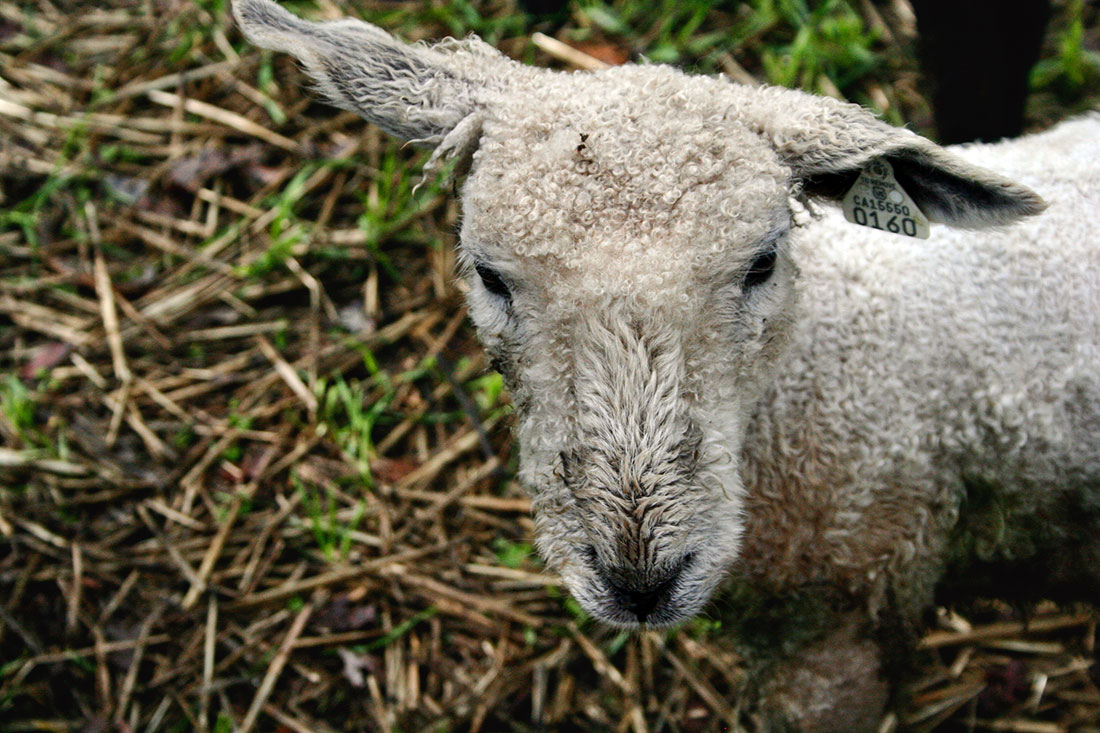
The air at Mimi Luebbermann’s farm hums with organic magic. We arrive at Windrush Farm under a rainbow relinquished by the early morning showers that left the earth damp and the air fresh. Purpled mustard greens poke up out of the grass around stoops and sidewalks, opalescent oyster mushrooms bloom from neglected firewood. The sun is shining over the green hills though gentle showers continue to fall over Windrush Farm and all the creatures residing there. Mimi waits for us clad in a cherry red felted pull over at the door; we are late and so we dive straight into a buzzing hour of morning chores. We feed the alpacas, llama, goats and then sheep, which unbeknownst to us have been joined by a sly and romantic ram, while marveling at the deep green blush of her December pastures.
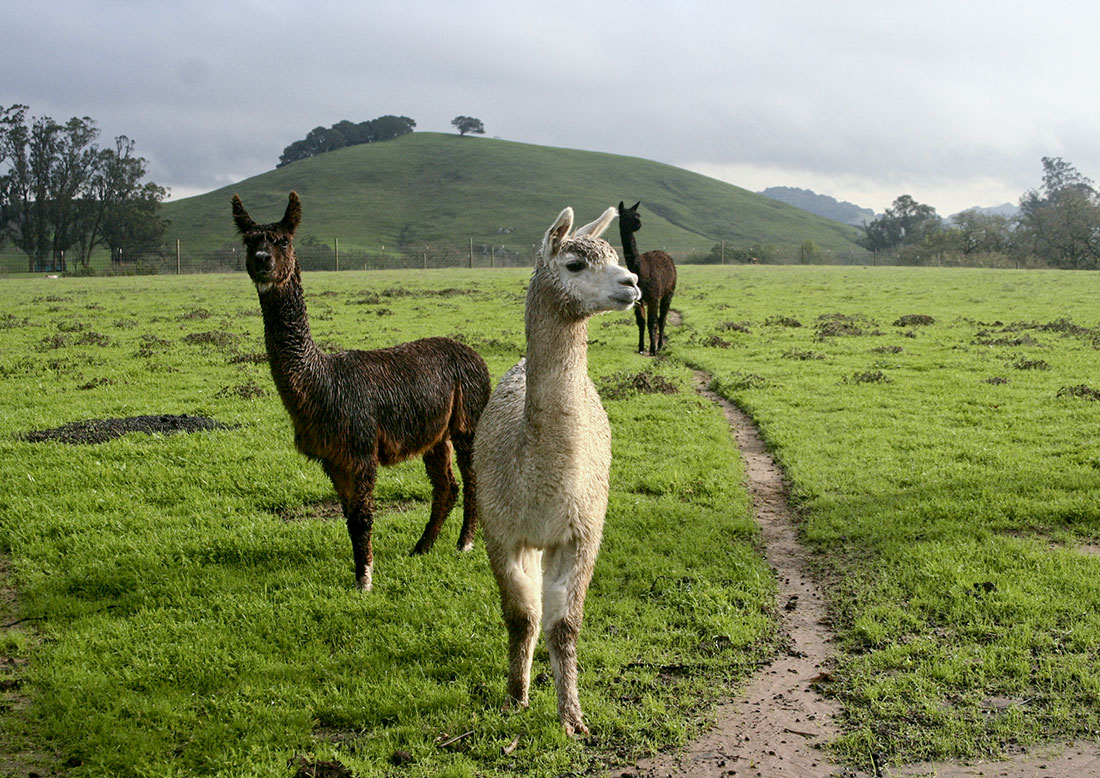
Mimi has farming in her soul. She grew up on a hundred-acre farm in Virginia before moving at the age of seven to Florida with her family. She moved to California in the mid ’60s because “Well, everybody was coming to California.” She lived in Oakland for over twenty years and immediately began pulling life from the soil there. She planted a fruit tree hedge and began raising chickens. She was “practicing,” she says, for her impending return to farm life.
Despite the glimmering insinuation of magic in the air, Mimi is very matter of fact—a real-life heroine. She has owned and operated Windrush for twenty years now and is a connoisseur of all things ovine. Her work is in coordinating elaborate systems of soil, grass and fences, time and the life-cycles of the sheep. She is an authority on the practice of rotational grazing*, a complicated closed-loop system of land/animal management that requires time, effort and a discerning eye. Rather than forcing her farm onto the earth, she seems to gently coax life from her twenty-five acres.
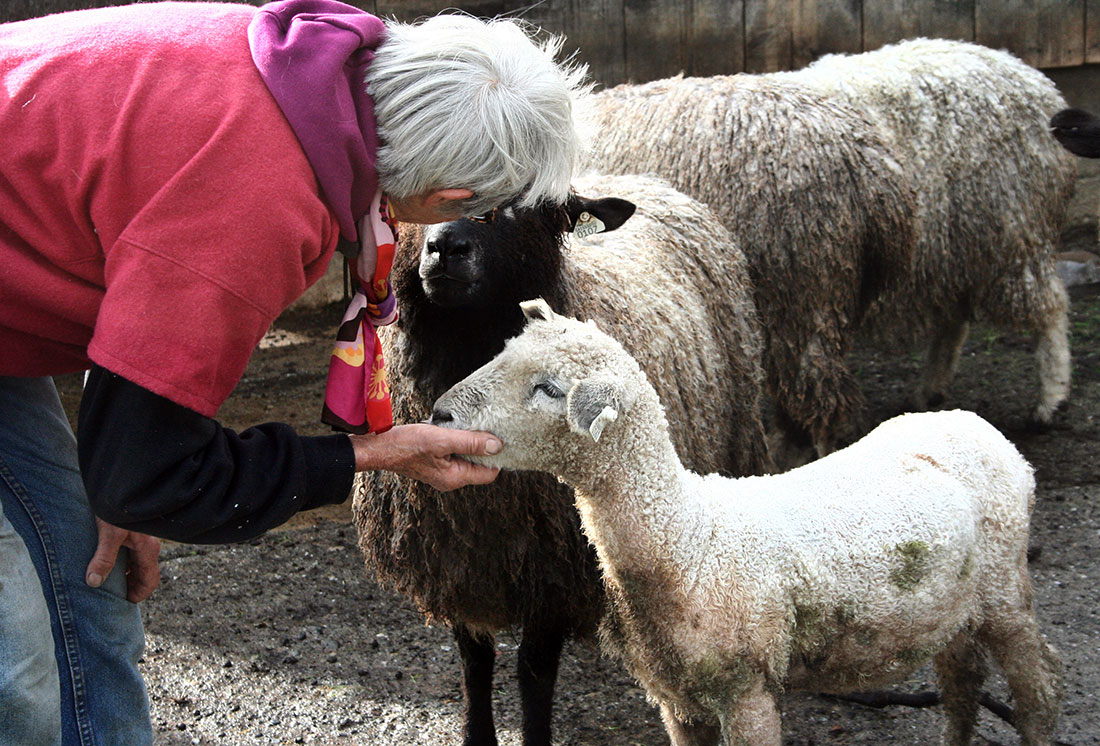
She teases magic from the earth in much the same way she tugs and twists yarn from a cloud of fluffed wool, with the knowledge and confidence that comes with years of experience. That being said, farming—even for the experienced—is by no means easy. Every year there are obstacles to overcome, and California’s current drought poses a serious threat to many of our local agriculturalists. Mimi herself had to re-home over half her flock over the past year in order to save her pastures as grass growth slowed and lasting damage due to over-grazing became an imminent danger.
“Come on girls, hurry! hurry!” This is what 26 sheep eating breakfast sounds like (audio clip may not play on all browsers):
Windrush is home to Nelly, a sweet Yellow Labrador with selective hearing, twenty-six sheep (Corriedales and Shetlands), one llama, three alpacas, a flock of chickens for eggs, a handful of goats for milking, and a lovely retired cow named Daisy.

The two breeds of sheep are mixed so that each of the twenty-six is uniquely lovely; some boast fleece that is lustrous and curly (indicating Shetland heritage), while others enjoy a splendid crimp (evincing Corriedale genetics).
Luster, Mimi explains, is produced by fiber that is curly, rather than kinky, allowing light to gleam off of it like polished silver. The result is a delicious pearliness similar to silk. Crimp, while being slightly less glamorous due to it’s kinkiness that refracts light every which-way, preventing shine, is precious in its own utilitarian way. Crimp is what allows knitted wool to keep it’s shape; the kinks lock together when spun and knit creating more spring and integrity in the fabric. Mimi breeds Alpaca, Shetlands and Corridales so that she can blend the wools, providing the best of both worlds; crimp and luster in one beautifully balanced skein.
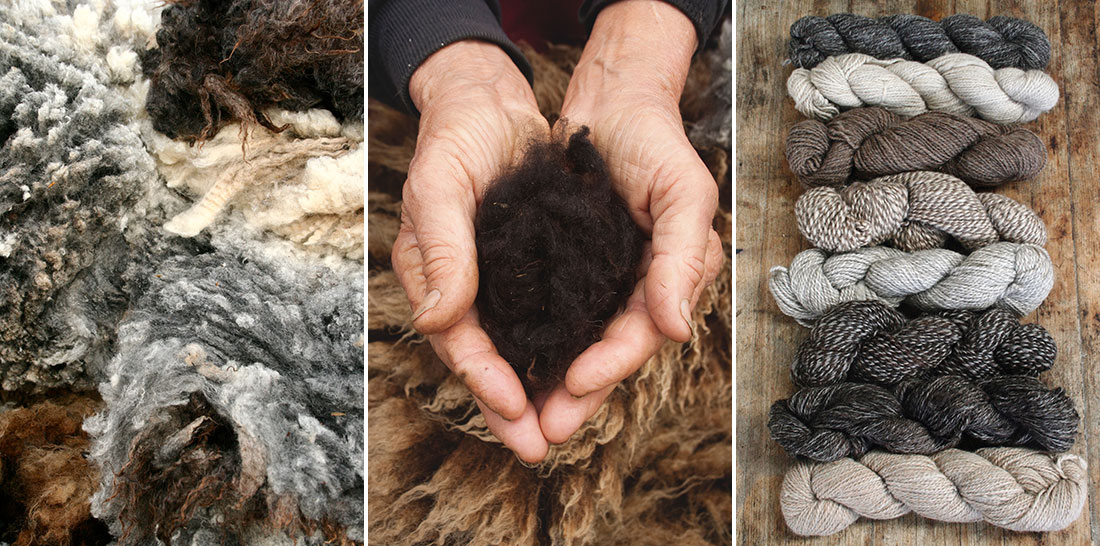
The fleece grown by these sheep range in color from cream to silver to chocolate, a color palette which is the basis for a significant portion of Mimi’s line of wool. For the rest she uses all natural dyes made from Cochineal, a tiny beetle which produces an impossible magenta, indigo, and onion skins, to produce a rich collection of yellows greens blues pinks and oranges. She also blends the fibers of her many different animals to create a recipe for whatever type of garment she wishes to make. For example, she uses llama’s fiber, which is hollow and super insulating, blended with sheep’s wool for outerwear, and blends alpaca with sheep’s wool and silk for a creamy softness for next-to-the-skin garments.
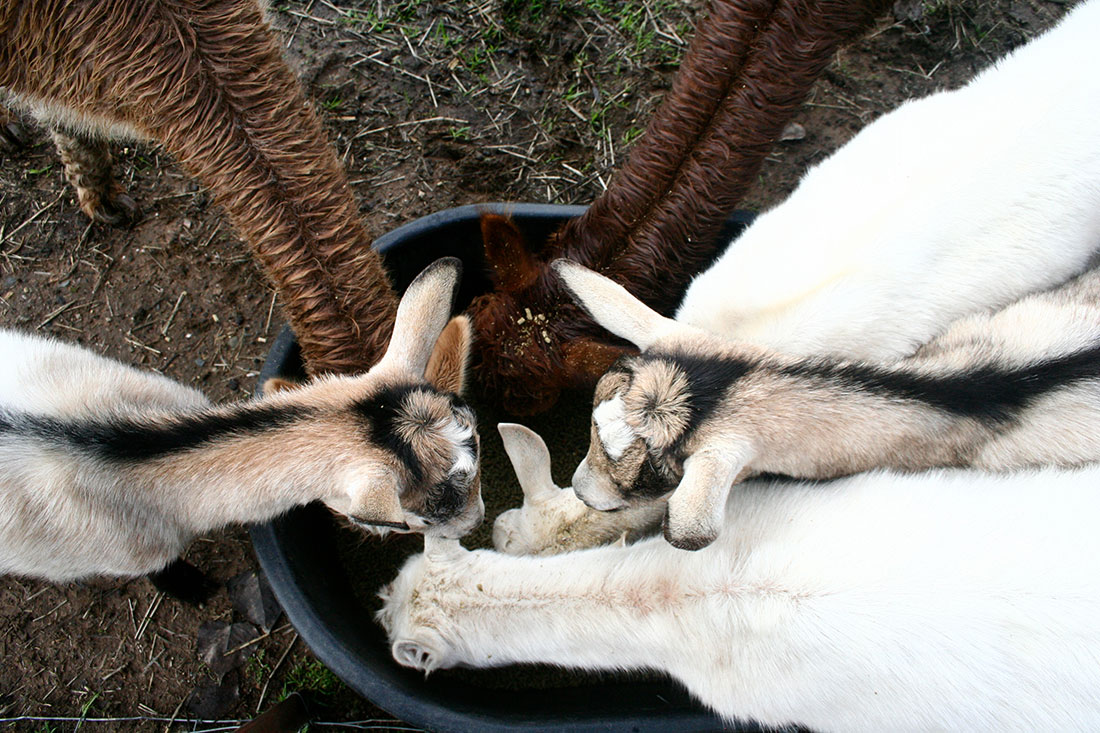
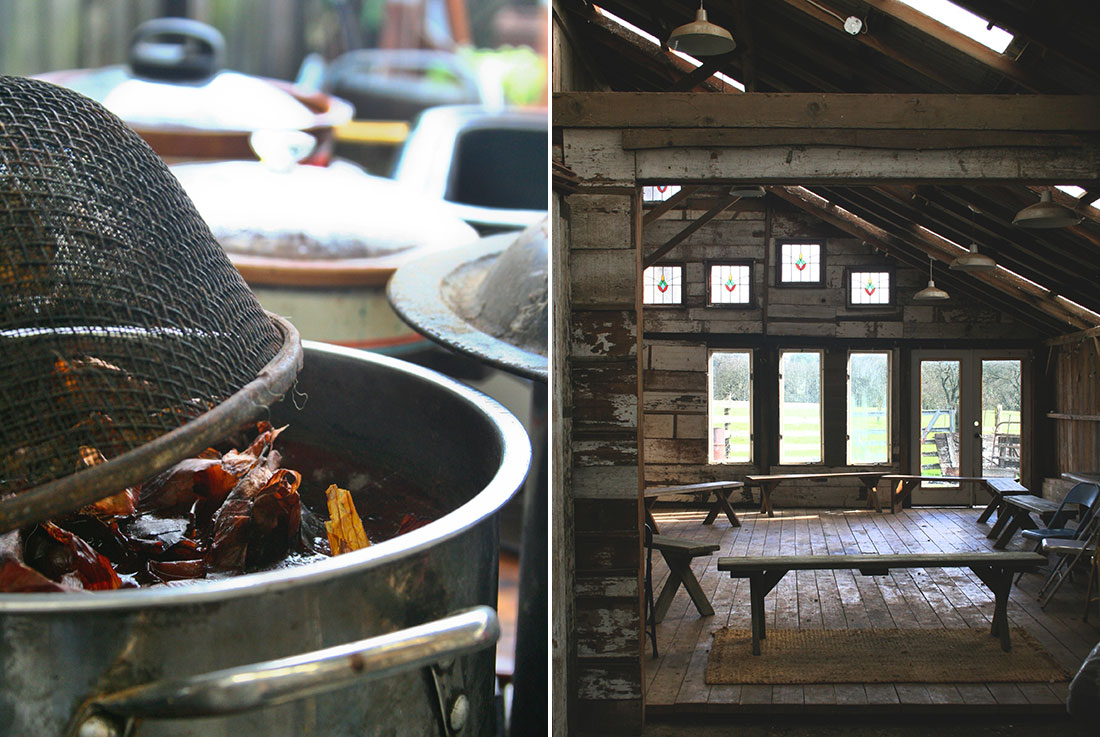
Daisy (the retired cow) is one of the stars of Windrush Farm’s educational program. There is a summer camp here in which kids get to feed the animals, learn crafts like spinning and seed saving, essentially just have fun on the farm. During the school year elementary school students visit the farm on field trips run through Marin Organic coming from as far away as San Francisco to march around in the verdant pastures collecting seeds, learning how to milk goats and observing the characteristics of the local watershed. Standing in the pastures one can see San Antonio Mountain, the birthplace of the San Antonio Creek, which, destined to join the Pacific Ocean at the San Francisco bay, runs along the edge of the property.
The creek also has the interesting fate of being a real symbol of an imagined demarcation. It is the boundary that divides Marin county, in which we stand, from Sonoma County. This fact strikes me as particularly ironic. In contrast with Mimi’s power to organically orchestrate her life and her land, this county border seems particularly banal and arbitrary. The authority of such demarcations is called into question.
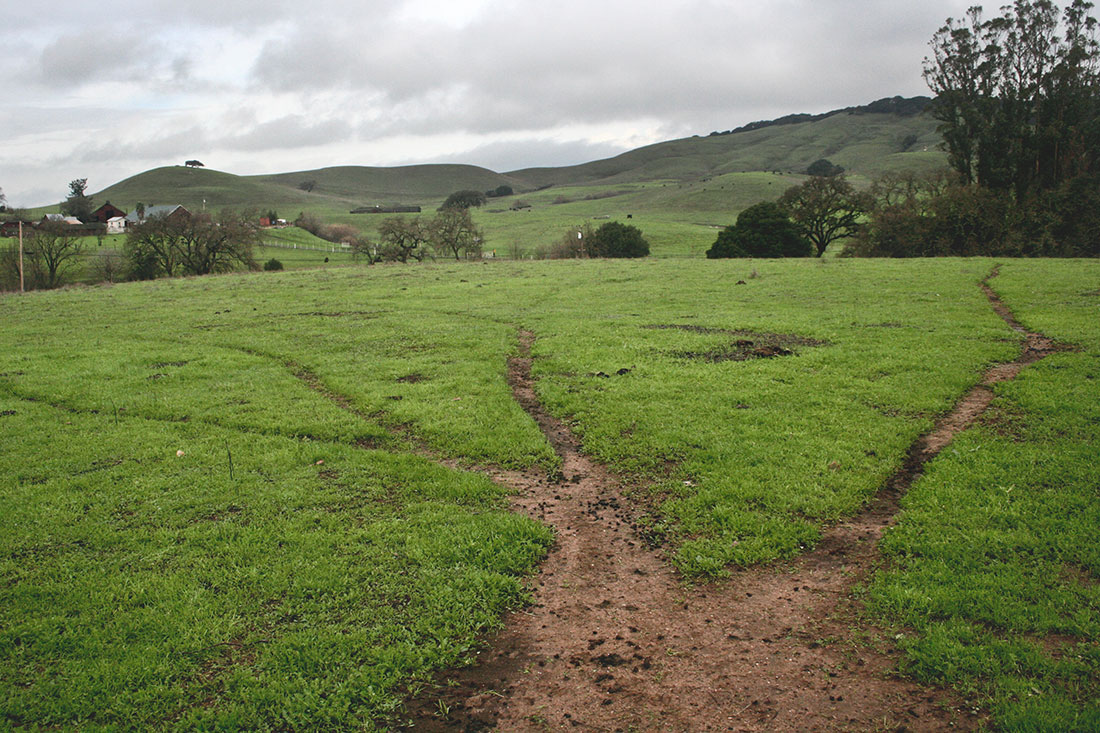
The ram that escaped from his rather solitary pasture into that of his female counterparts’ decided that his boundaries were not fitting and departed from them. Likewise, Mimi herself seems to defy limits. Rather than living in between the lines, she creates them—her life is extraordinary, and the poetic irony of the boundary here serves to highlight the elegant unorthodoxy of her life on Windrush farm. Mimi is living out a dream that many of us hold dear. In many ways she is actively creating the world she wants to live in in the midst of an obscene, chaotic reality, evincing that with love and hard work we can defy mundanity and live splendidly.
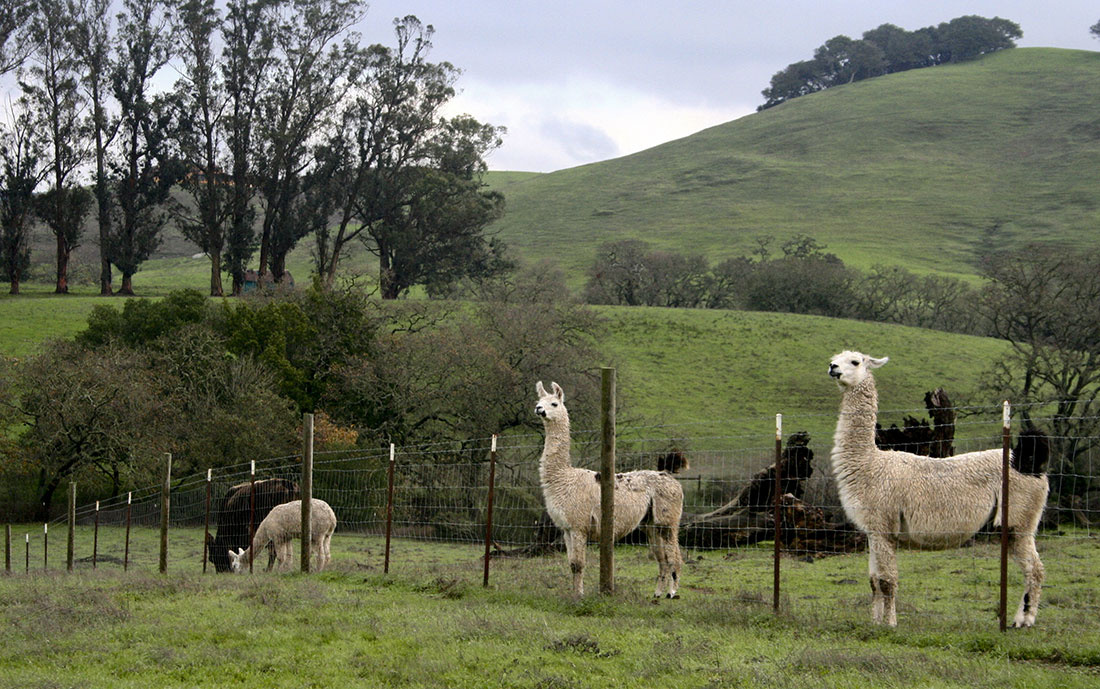
Mimi sells at the farmer’s market at the Civic Center in San Rafael, from November until March. There you can browse her signature line of Windrush Farms yarn and knit garments, or make make a special order for a specific knit item. You can also ask about spinning and dying classes at Windrush, or visit Knitterly’s website for more information. Field trips cost $150 and run from 10 am to 1 pm; up to two classes at a time can be accommodated. For more information on field trips to Windrush, go to their page on Marin Organic’s Farm-Field Education website. Mimi also provides wool for the “Local Pastures” blend, which can be found at Yolo Wool Mill in Woodland, CA.

*“Under rotational grazing, only one portion of pasture is grazed at a time while the remainder of the pasture ‘rests.’ To accomplish this, pastures are subdivided into smaller areas (referred to as paddocks) and livestock are moved from one paddock to another. Resting grazed paddocks allows forage plants (edible pasture) to renew energy reserves, rebuild vigor, deepen their root system, and give long-term maximum production. For rotational grazing to be successful, the timing of rotations must be adjusted to the growth stage of the forage.” (From Pastures for Profit, published by University of Wisconsin, 2014).
